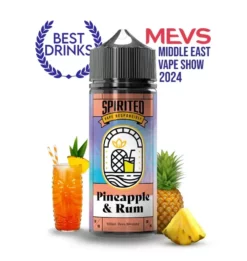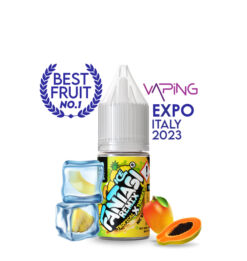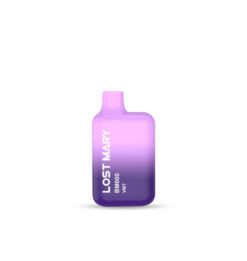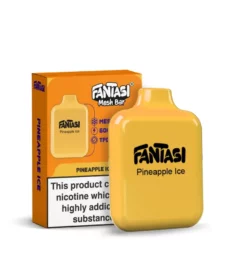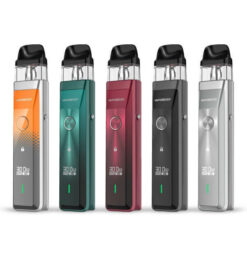Beginners Guide to Vaping
So, you’re curious about vaping? Maybe your friends have been raving about it, or you’re thinking of giving it a shot as a way to kick the smoking habit during STOPtober. Well, you’re definitely not alone in your curiosity. Vaping can seem a bit like uncharted waters, and you might have found yourself Googling “How to vape” more than once!
We thought we’d compile a complete beginner guide on how to vape to help you get started in your vaping journey.

Vaping Jargon
Vaping lingo can sometimes feel like diving into a whole new language. While some terms are pretty straightforward, others might leave you scratching your head.
We’ve got a comprehensive A-Z style jargon buster you can dive into, but for now, let’s start with the basics so you can understand this guide.
MTL: Mouth to Lung is a term for vapers who draw the vapour into their mouths before inhaling, much like the way most people inhale cigarette smoke.
Most MTL vapers will use a Starter Kit, Vape Pen or POD System, as Sub Ohm kits are designed to intake more vapour, which requires a DTL technique.
DTL: Direct to Lung is a term for vapers who inhale directly to their lungs, instead of drawing the vapour into their mouth and then inhaling. DTL tanks are usually Sub Ohm or Rebuildable, but some pod devices offer DTL too, it all depends on the resistance of your coil.
RDL: Restricted Direct to Lung is a vaping style that is looser than an MTL, but not a full DTL inhale. With RDL, users inhale vapour directly into their lungs, skipping the mouth-to-lung step, but with a tighter draw compared to the full-on Direct-to-Lung (DTL) approach.
RDL vaping is favoured by many enthusiasts because it offers a flavour-rich vaping experience with a more controlled level of vapour production compared to the airy DTL style.
50/50: 50/50 is a term used to describe vape juice that comes in an equal ratio of 50% VG to 50% PG. 50/50 e-liquids combine the smooth sensation and vapour production of VG liquids, with the flavour production of High PG vape liquids.
70/30: 70/30 is a term used to describe High VG vape liquid that comes in a ratio of 70% VG to 30% PG. 70/30 e-liquid is designed for use in Sub Ohm vape kits, the High VG content allows for an extremely smooth vape and allows the production of large vapour clouds when you exhale. Ideal for Cloud Chasers.
Coil: A Vape Coil is a length of resistance wire wrapped in a ‘coil’ around wicking material (typically cotton). When your vape juice is introduced to the coil, the wicking material absorbs it. When the battery is activated, the coil heats up, vaporising (converting the liquid to vapour) the e-liquid soaked inside the wicking material.
Dry Hit: You will inhale the terrible taste of burning cotton if you ignite your vape kit and inhale before the liquid has soaked into the coil, or if you run out of vape juice and take a puff. You’ll be alright once the taste has gone away, but you’ll probably remember not to take a dry hit in the future.
Ohm: Ohms are the standard units of electrical resistance measurement. The Ohm resistance of your coil will determine what heat/wattage setting your device needs to vaporise the vape liquid and produce vapour. Lower Ohm coils require higher temperatures to vaporise, whilst coils above 1ohm require significantly less power to function well.
Sub Ohm: Sub Ohm refers to a coil which has a resistance lower than 1 ohm.
Plus Ohm: Plus Ohm refers to a coil which has a resistance higher than 1 ohm.
Hybrid Kits: These are devices that can change between sub ohm and plus ohm coils.
Mods: The mod is the bottom part of the vape kit, in which the batteries are placed and the fire button is located. The term ‘mod’ is usually used to describe the more powerful vape devices which use powerful removable batteries such as 18650’s.
If you’re curious about how to inhale a vape, especially if you used to be a smoker, we’d suggest trying out MTL devices. It’s pretty much how you’d puff on a cigarette, so it’ll give you that familiar sensation you might be craving.

How Vapes Work
Have you ever wondered ‘how does a vape actually work?’
The process of how a vape works can be broken down into several steps:
Battery Activation: When you turn on the vape (if it has a button, then usually it’s by pressing the button 5 times as a safety feature), the battery sends power to the atomizer. It’s important to note that not all vapes have buttons and some are fired up simply by inhaling.
Coil Heating: The atomizer contains a coil, typically made of kanthal or mesh. When electricity flows through the coil, it heats up rapidly due to its resistance. This high temperature turns the vape liquid into vapour.
E-Liquid Wicking: The vape juice is drawn from the tank or pod to the coil through a wicking material, often made of cotton. This ensures a steady supply of liquid to the coil for vaporisation.
Vaporisation: As the coil heats up, it evaporates the vape liquid, turning it into a cloud of tiny droplets suspended in the air. This vapour is what users inhale and exhale.
By heating the nicotine e-liquid, instead of combusting it like standard cigarettes, you’re avoiding inhaling carbon monoxide and tar. That’s why the NHS say that vaping is 95% safer than smoking, because there are no cancer-causing ingredients.

Choosing the Right Vape
Sorting through the variety of vaping devices out there can be a bit of a puzzle. Even the most experienced vapers sometimes find it tricky, since many devices have similar or mixed features that blur the lines.
In essence, there exist five primary categories of electronic cigarettes: Starter Kits, Vape Pens, POD Systems and Sub Ohm Kits.
Let’s find out what type of device best aligns with your vaping preferences.
Starter Kits
Starter Kits are like the friendly entry point to vaping.
They can look like pens, pods, or tiny devices, and the best thing is they’ve got everything you need to start vaping right away.
They usually come with a built-in battery that you can’t take out, and most of them are compatible with different coil sizes.
When you’re using these vape starter kits, think Mouth to Lung (MTL) style. That means you take a drag and draw the vapour into your mouth before inhaling to your lungs, kind of like how you’d smoke a regular tobacco cigarette.
For your vape liquids, stick with High PG or 50/50 blends (we’ll chat more about PG later) and even nic salts (we’ll dive into that too).
Avoid the thicker 70/30 vape juices; they’re a bit much for coils above 1 ohm and can make them wear out too quickly or just not work at all.
Recommended high-performing starter kits:
Vape Pens
Vape pens are also classed as vape starter kits but specifically, they are in a large cig-a-like shape.
Vape pens are designed to replicate the shape and size of a traditional pen, making them compact and convenient for on-the-go vaping.
Vape pens usually come with a sub ohm coil, perfect for those thicker 70/30 e-liquids, and a standard coil (less than 1 ohm) for all sorts of vape liquids. But as vape brands become more innovative, most pen devices can interchange their coil resistance to plus ohm coils for nic salt vaping.
This means you can dive into a whole world of flavours and vape juice mixes without having to grab a whole new device and switch from mouth-to-lung to direct-to-lung vaping styles easily.
Recommended high-quality vape pens:
POD Systems
POD Systems/Kits are the latest e-cigarette innovation, initially designed for 50/50 E Liquids and later adapted for nic salt e-liquids.
These user-friendly devices feature a convenient removable and refillable pod and have a top filling or side filling to insert your vape juice. Some pod devices offer adjustable airflow for a more personalised vaping experience.
The pods are refillable, which is great, but like anything, they need a little TLC over time.
They have this wicking material and coil inside that eventually needs replacing. But this is as easy as swapping the old pod for a fresh pod, so you don’t need to worry about changing any coils with these types of devices.
These devices have grown to be more innovative as time has gone on, becoming hybrid kits. Hybrid kits mean the device is capable of sub-ohm resistances and plus-ohm resistances.
So even though it’s a beginner-friendly kit, you can still play aro und with different coil sizes to find the one that suits you.
Recommended best pod systems:
Advanced Kits
Vapers seeking precise control and massive vapour production can use advanced kits. These kits can use coils below 1ohm, allowing lower-temperature vaporisation for substantial vapour volume.
When these kits use sub-ohm coils, they can be called sub-ohm kits as well. However, a majority of advanced kits are hybrid kits, using both sub-ohm and plus-ohm coils for a customised vape.
These devices are packed with higher technology, some with a dual coil for enhanced flavour, improved anti-leak systems, and precise heating control – it all depends on the device you choose.
The mods include screens displaying critical information like wattage, puff count, battery capacity and smart modes. Most require two powerful 18650 batteries, emphasising the need for battery safety and classifying them as advanced vape kits.
We always recommend using battery chargers like XTAR or Nitecore to recharge your vape batteries.
However, these kits are really advanced, so we don’t recommend using these as a beginner until you’re confident in battery safety, knowing exactly what kind of coil you like to use, and which particular features will make your vaping more enjoyable.
Recommended innovative kits:
Tip: A common feature of vape devices is an adjustable airflow setting that allows you to choose between a tight and loose draw. A more restricted airflow produces a warm and flavour-dense vape experience; however, do not totally close the airflow as this will overheat and destroy the coil.
One important thing to remember: you’ll need to swap out those coils roughly every 4 weeks, depending on how much you vape, to keep things running smoothly. Once you start to taste burning, the flavour isn’t as prominent as it used to be, or you can see the liquid inside the tank has turned a dark brown colour.

Vape Coils Explained (Ohms)
Vape coils are the heating elements in vaping devices responsible for vaporising e-liquid. The resistance of a coil is measured in ohms (Ω).
Coil resistance affects the vaping experience, including vapour production, flavour, and the warmth of the vapour.
Different coil resistances cater to various vaping styles:
Low-Resistance (Sub-Ohm) Coils (0.1-0.9Ω): These coils produce more vapour and are designed for direct-to-lung (DTL) vaping. They require higher wattage and produce warmer vapour.
Mid-Resistance Coils (1.0-1.5Ω): These coils strike a balance between vapour production and flavour. They are suitable for both DTL and mouth-to-lung (MTL) vaping.
High-Resistance Coils (1.6Ω and above): These coils are primarily for MTL vaping, providing a tight draw and efficient nicotine delivery at lower wattages.
The choice of coil resistance depends on your vaping style, device capabilities, e-liquid ratio, and type of nicotine. Lower ohms typically require more power, while higher ohms are better suited for lower-wattage vaping.

What are PG and VG?
Propylene Glycol (PG) and Vegetable Glycerin (VG) are two fundamental components of e-liquids used in vaping.
These ingredients play critical roles in shaping the vaping experience, influencing factors like flavour, vapour production, throat hit, and more.
Propylene Glycol (PG)
PG is known for its excellent ability to carry and enhance flavours. It effectively carries the flavouring compounds in e-juices, ensuring that you can taste the intended flavours with clarity and intensity.
It also provides a noticeable throat hit, which is a sensation akin to the feeling of smoking. This is particularly appealing to individuals transitioning from smoking to vaping, as it replicates some of the sensations they are accustomed to.
PG is thinner in consistency compared to VG, which makes it easier to handle and is suitable for various types of vaping devices, including pod systems and MTL (mouth-to-lung) setups.
Due to its thinner consistency, PG-based vape liquids are often used for higher nicotine concentrations, making them ideal for those who require a stronger nicotine hit.
Vegetable Glycerin (VG)
VG is responsible for producing thick, dense vapour clouds. When heated, VG creates a substantial amount of vapour, making it the preferred choice for cloud-chasing enthusiasts and direct-to-lung (DTL) vapers.
VG offers a slightly smoother and milder throat sensation compared to PG, having a thicker, more viscous consistency than PG.
Vape liquids with a higher VG ratio tend to be thicker and may require more powerful devices to vaporise effectively.
While VG doesn’t carry flavours as effectively as PG, it can still contribute to the overall flavour profile of vape juice. Some vapers enjoy the sweetness and subtle flavour notes that VG can add to the vaping experience.
Most vape juices on the market use a combination of PG and VG to strike a balance between flavour, throat hit, and vapour production.
The specific PG/VG ratio can vary from one vape liquid to another, catering to different preferences and vaping styles.
Common PG/VG ratios include 50/50, 70/30 (VG/PG), and 40/60, each offering a unique vaping experience.

Understanding E-Liquids: 70/30 & 50/50
When you are wondering how to vape, it’s important to understand the difference in vape juice, especially when you have already picked the device you want to be using.
50/50 e-liquid is a popular choice among vapers that blends propylene glycol (PG) and vegetable glycerin (VG) in equal parts, creating a versatile and sought-after option. It delivers a familiar throat hit for ex-smokers transitioning to vaping, while also offering vibrant and accurate flavours.
Compatible with various devices, including pod systems and mods, it ensures a smooth and consistent vaping experience. Plus, the balanced PG/VG ratio reduces the chances of irritation, making it ideal for sensitive users.
Designed to be used with coil resistances between 1.0 ohm and 1.2 ohm. These liquids come in both nic salts and freebase options and only 10mls can be purchased in 50/50.
70/30 e-liquid is one of the more popular options for sub-ohm devices and works well to provide a smooth throat hit and satisfyingly, large vapour clouds.
The product is made from 70% VG (Vegetable Glycerine) and 30% PG (Propylene Glycol).
People often opt for this option due to its ability to form bigger and dense clouds to perform vape tricks with.
Tip: If you have vaped disposables before and enjoyed the strong flavour, opt for bar juice e-liquid. Bar juice has double the flavour concentration, compared to standard e-liquids, in 50/50 ratios and mirrors the flavour taste you would receive in disposable vapes.

Freebase VS. Nicotine Salt Liquids
Freebase nicotine and nicotine salts are different types of nicotine in vaping e-liquids with distinct characteristics and provide different vaping experiences.
Chemical Form:
Freebase Nicotine: Purest form, chemically altered for alkalinity.
Nicotine Salts: Derived from natural tobacco nicotine, mixed with benzoic acid, less alkaline.
Smoothness and Harshness:
Freebase Nicotine: Harsher throat hit, especially at high concentrations.
Nicotine Salts: Smoother, even at higher nicotine levels, thanks to benzoic acid.
Nicotine Strength:
Freebase Nicotine: Available in various strengths (3mg/mL to 18mg/mL+).
Nicotine Salts: Commonly in higher concentrations (10mg/mL to 20mg/mL) for a smoother experience.
Absorption Rate:
Freebase Nicotine: Slower absorption, resulting in a gradual nicotine intake.
Nicotine Salts: Faster absorption, mimicking traditional cigarette nicotine delivery.
Device Compatibility:
Freebase Nicotine: Compatible with various high-powered vaping devices.
Nicotine Salts: Suited for low-wattage, mouth-to-lung pod devices, vape pens, starter kits, and coil resistances above 1.0 ohm.
For someone transitioning to vaping from smoking, we would recommend using nicotine salt liquid. Nic salts are extremely rapid-acting and can enter your bloodstream in as little as 6 seconds.
In essence, they were created to replicate the ‘nicotine buzz’ that a cigarette would provide. They are readily absorbed and also leave your system.

Choosing the Right Nicotine Strength
When you decide to switch from smoking to vaping, it’s important to choose the right nicotine level in your vape liquid.
Nicotine levels in vaping are typically measured in milligrams (mg), and they can vary from 3mg to around 20mg, and this will be for both freebase and nic salts.
3mg Nicotine
If you opt for a vape liquid with 3mg of nicotine, this is like smoking about 5 cigarettes or fewer each day. It’s a lower nicotine level suitable for light smokers or those who are trying to significantly cut down on their nicotine intake.
5mg to 6mg Nicotine
Choosing e-liquids with 5mg to 6mg of nicotine is similar to smoking between 5 and 10 cigarettes a day.
This range is suitable for people who smoke moderately and are looking for a vaping experience that replicates their nicotine satisfaction.
10mg to 12mg Nicotine
If you’re a moderate to heavy smoker, typically consuming 10 to 20 cigarettes daily, e-liquids with 10mg to 12mg of nicotine can provide a comparable nicotine intake.
This level helps manage cravings effectively while transitioning from cigarettes to vaping.
18mg to 20mg Nicotine
For those who smoke 20 or more cigarettes per day, it’s recommended to start with liquids containing 18mg to 20mg of nicotine. These levels provide a similar amount of nicotine to cigarettes, helping heavy smokers make a smoother transition to vaping.
The idea behind selecting an appropriate nicotine level is to satisfy your nicotine cravings while gradually reducing your overall intake.
Over time, you can lower the nicotine concentration in your vape liquids as you become more comfortable and confident in your ability to quit smoking.

Disposables vs. Pre Filled Pods
Sometimes there’s a bit of confusion surrounding disposables and prefilled pod devices, they’re ultimately the same, but pre-filled pods are slightly more environmentally friendly and more cost-effective.
Disposables:
Disposable e-cigarettes are convenient and simple-to-use vapes that come preloaded with 2ml vape juice, 20mg of nic salt and a built-in battery.
They are designed for single use and are discarded once the vape juice or battery is depleted.
Disposables are convenient and require no maintenance, making them a straightforward choice for beginners or for those looking for a portable and discreet vaping option.
However, they can be less cost-effective in the long run compared to refillable systems.
Pre Filled Pods:
Prefilled pods are cartridges preloaded with vape juice, designed to be used with specific pod systems. They offer a middle ground between disposables and fully customisable vaping setups.
One thing about them that is intriguing, is that they’re often more eco-friendly than disposables.
You’re just replacing the vape liquid cartridge, not the whole device.
So rather than throwing away the whole device once the e-liquid has run out, you only replace the flavour cartridge with a fresh one.
Now, the choice between disposables and pre-filled pods depends on a bunch of stuff: how easy you want it (disposables are great for on-the-go), your budget, the environment, and what you’re looking for in your vaping experience.
Disposables are super convenient, while pre-filled pods give you more flexibility and customisation if you’re up for investing in a reusable device.
However, if you’re transiting from smoking, neither of these devices is cheap in the long run, and vaping is supposed to be more cost-effective compared to buying a pack of cigarettes.
So we would always recommend starting on an easy pod device like the XROS 3 Mini by Vaporesso, just like the pre-filled devices, but instead of throwing away the flavour cartridge, you only need to refill the pod with your preferred e liquid.

Advice on Changing From Cigarettes to Vaping For STOPtober
If you want to start vaping in a bid to give up cigarettes for STOPtober, then congratulations on taking the first steps!
Did you know that switching to vapes could make it easier for you to quit smoking during STOPtober? You might not be aware of the considerable positive effects quitting smoking and switching to vaping can have on the environment and your health.
Using a nicotine vape virtually doubles your odds of quitting smoking when compared to other nicotine replacement therapies, such as patches or gum.
When you are used to the tobacco flavour, and fruity or candied liquids don’t appeal to you, Debonair is an exclusive tobacco-flavoured vape juice that will satisfy your cravings whilst ensuring you don’t smell of cigs.
Each tobacco flavour is complemented by unique, flavoursome notes, so they won’t taste like your ordinary Malboros, but they will taste like expensive tobacco that will elevate your vaping in a way cigarettes could never.
You can see our in-depth blog about what happens when you switch to vaping, to see the effects it’ll have on your body and any symptoms you might face.
Keep an eye out on our Facebook and Instagram, emails, and new blogs to make this STOPtober journey as easy as possible for yourself.
If you’re struggling or need any advice, don’t hesitate to reach out to us!

